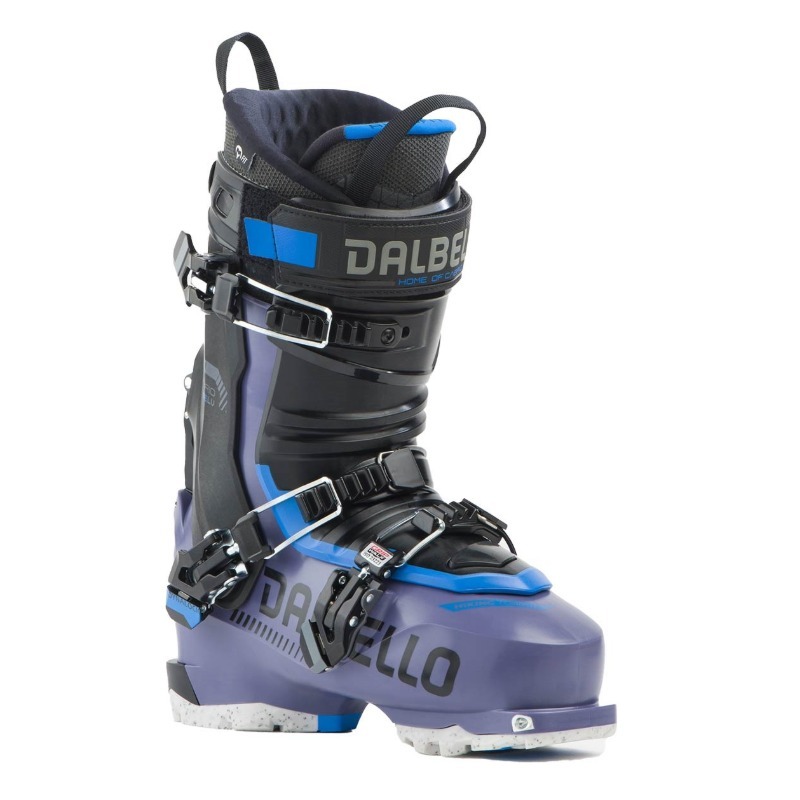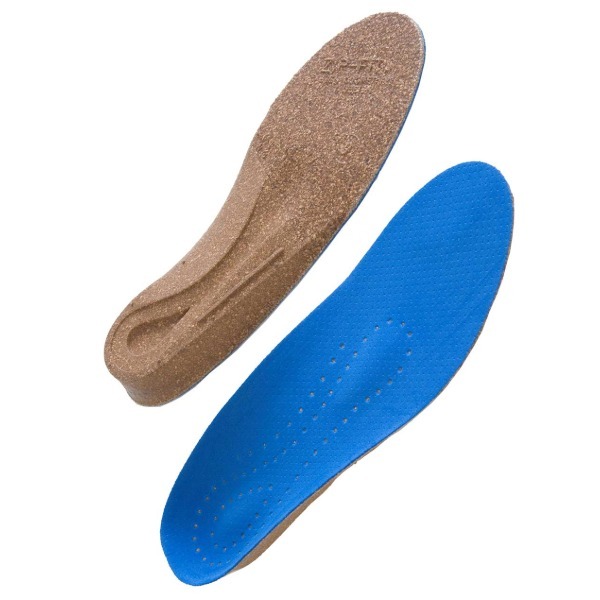SKI BOOT FITTING
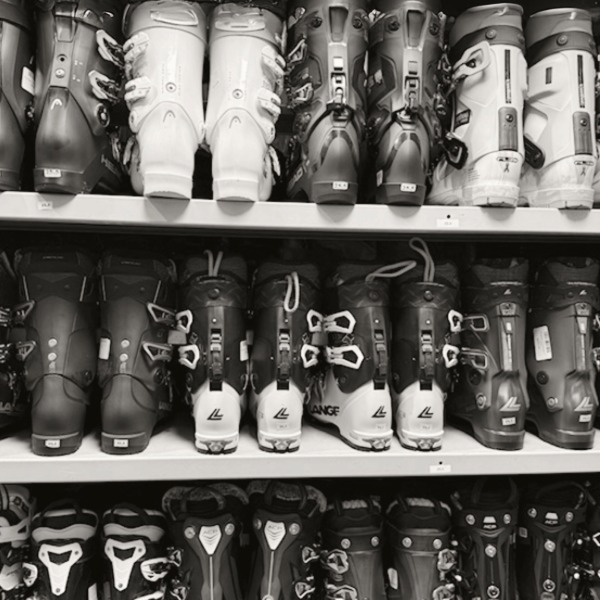
Ready to find your perfect fit?
Book a personalized boot fitting with one of our expert bootfitters. We’ll assess your stance, shape, and skiing style, then match you with the right shell, liner, and adjustments for all-day comfort and control. It’s the best hour you’ll ever spend off the slopes — and it makes every run after that one to remember.
Book Your Appointment
Why the Right Ski Boot Matters
Ask anyone who’s survived a day in the wrong boots, and they’ll tell you — nothing ruins skiing faster. Most sports let us move freely in soft shoes. Skiing locks our feet in rigid plastic shells while we react to changing terrain and snow.
Too tight, too loose, out of balance? That’s a recipe for a bad day. So much of skiing starts with your feet, and if your boots aren’t right, you might as well toss that $329 lift ticket. When it comes to ski boots, fit is everything. The right pair helps you ski better, stay warmer, and enjoy every run. The wrong pair? Instant foot drama. That’s why we have perfected ut ski boot fitting process.
What to Know About Women’s Ski Boots
So how do you choose the right boot? One word: fit.
Forget what your partner, instructor, magazine review, or best friend swears by. Forget flex charts and pretty colors. Recommendations are fine, but fit trumps everything. If the boot doesn’t fit your foot, it doesn’t matter what the label says.
Boot specs like flex and last are often hyped because they’re measurable. But what matters most — the feel on the inside — you can’t see from the outside. That’s where a proper fitting process comes in.
Ski Boot Terminology
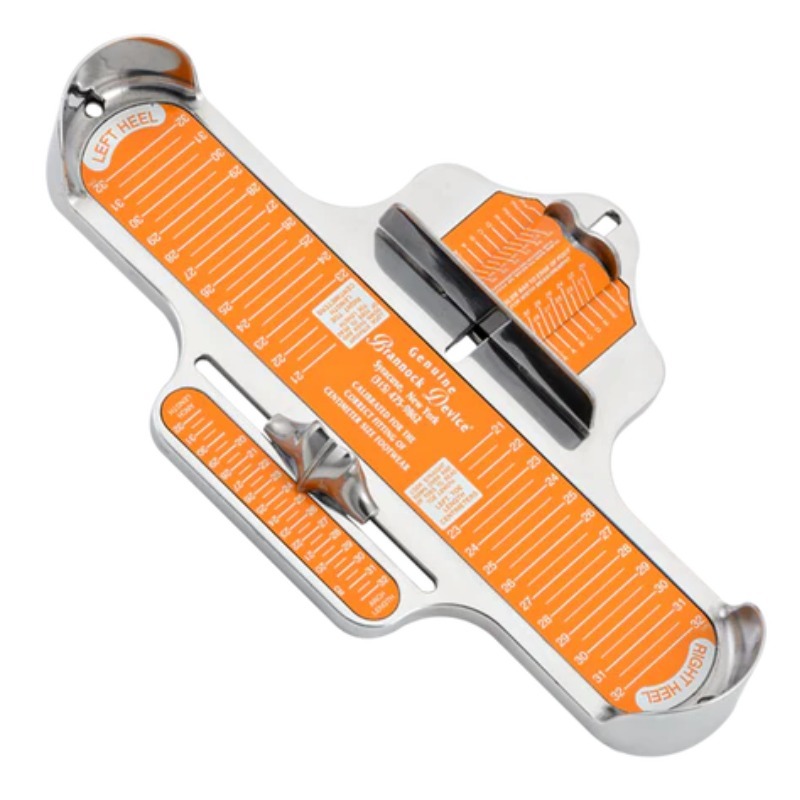
Ski Boot Last
The “last” = the width of the shell at the forefoot, measured in millimeters.
Narrow lasts (97–98mm) = snug fit, often for advanced skiers who want responsiveness.
Wider lasts (100–102mm) = roomier fit, higher volume through instep and heel.
The difference between narrow and wide is often only 5mm — about the width of a pencil! Don’t get hung up on numbers. Comfort and control matter more than specs.
Ski Boot Flex
Flex ratings are… let’s be honest… arbitrary. A 100 flex from one brand may feel totally different from another. In general:
Stiffer boots (120+) = elite skiers, race-level response.
Mid-range (95–115) = where most women land, depending on weight and ability.
Softer = easier entry and comfort, but less performance.
Flex can often be adjusted, softened, or stiffened by your boot fitter.
Ski Boot Size
Boots use the mondo point scale = your foot length in centimeters. A women’s street size 8.5 = about a 25.5 mondo. But most skiers size down from their street shoe for performance and comfort.
Pro tip: There are no true half sizes. A 24.0 and 24.5 shell are identical — only the liner changes. That’s why working with a boot fitter is essential.
The Women’s Ski Boot Fitting Process
Getting the right boot isn’t about a fitter picking a pair for you. It’s a partnership:
The boot fitter narrows down size, ability, and ski days.
You provide feedback on feel and comfort.
Together, you find the boot that actually works for your foot.
A good fitter won’t sell you a boot that can’t be made to work — and will happily let you walk away boot-less if the fit isn’t right.
Fit Zones: How to Judge a Boot
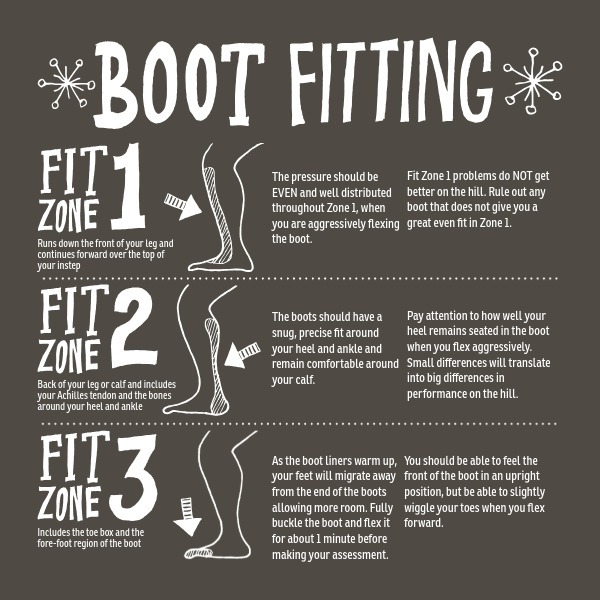
Fit Zone One - Shin + Instep
Fit Zone One runs down the tongue of the boot. The goal here is even pressure — not too much on your shin or across your instep. If pressure feels focused in one spot or the boot feels harsh up front, move on. A perfect fit in Zone One should feel balanced when you flex forward.
Fit Zone Two - Heel + Calf
This is the control center of your ski boot. A snug heel pocket equals better precision on snow. Even minor differences in heel hold translate to major differences in control. Choose the boot that hugs your heel best — a skilled bootfitter can fine-tune small pressure points here if needed.
Fit Zone Three – The Toebox
This is what most people notice first. When trying on boots, buckle completely and flex forward so your heel slides back into the pocket. In a proper fit, your toes should lightly touch the end of the liner when standing straight, then pull away as you flex. Warm liners can easily create more space.
What Comes After the Boot Fit?
Insoles
Supportive insoles = more comfort and stability.
Options:
Pre-molded drop-ins.
Custom footbeds built for your foot.
Both can help — the right one depends on your foot and your needs.
Stance Alignment
Think of this like getting your tires balanced. Everyone’s legs are different, and old injuries matter. Small alignment tweaks keep your knees, hips, and skis working together.
can use this widget to input text into the page.
Boot Heaters
Cold feet can ruin even the best ski day. That’s why we often recommend adding boot heaters after your fit is dialed in. Custom-installed right inside your liners, boot heaters keep your toes warm from the inside out. It’s one of the smartest upgrades you can make for all-day comfort and consistent performance.
The Outdoor Divas Difference
At Outdoor Divas, we believe that a great ski day starts from the ground up — and that means ski boots that truly fit you. Every woman’s foot is unique, and every fit tells a story. That’s why our ski boot fitting process is so personal — and why women from all over Colorado (and way beyond) trust us to get it right.
When you book a boot fit with us, you’ll move through what we call our Boot Fit Zones — a step-by-step process designed to uncover exactly what your feet need for warmth, balance, and performance. From the initial conversation about your skiing style and ability, to the shell assessment, custom footbeds, liner molding, and fine-tuning stance alignment — we dial in every detail until your boots feel like they were made for you.
Why It Matters
Women’s feet aren’t just smaller versions of men’s — they’re shaped differently. Narrower heels, lower calf muscles, unique instep heights, all of it impacts how a ski boot should fit and perform. Our team understands that anatomy, and we build your fit around it.
The Bottom Line
You’ll walk out of Outdoor Divas with ski boots that fit your foot, your stance, and your skiing style — not just your shoe size. That’s the Outdoor Divas Difference: a fit that’s personal, a process that’s proven, and expertise that’s 100% focused on women. Because when your boots fit better, you ski with more confidence, comfort, and control — and that’s what we’re here for.
Ready to Feel the Difference?
Our custom ski boot fitting appointments are available by reservation so we can give every guest our full attention. Book your session online or give us a call, and we’ll guide you through the Boot Fit Zones from start to finish — no rush, no guesswork, just perfectly fit ski boots that make you fall in love with skiing all over again.
Women’s Ski Boot FAQ's
What’s the most important thing in a ski boot?
Fit. Always. Everything else comes second.
Do flex numbers really matter?
Only as a rough guide. A 100 flex from one brand won’t match another. Focus on how the boot feels, not the number.
Should I size down from my street shoe?
Sometimes. Most intermediate to advanced women ski best in a slightly smaller mondo size for a snug, performance fit. Your bootfitter will help you decide.
What if my toes touch in the shop?
That’s normal. Once liners pack in and you’re flexing, your heel seats back and toes pull away.
Can a bad fit be fixed later?
Small issues, yes. Big problems, no. Start with the best possible fit, then let a boot fitter fine-tune.
